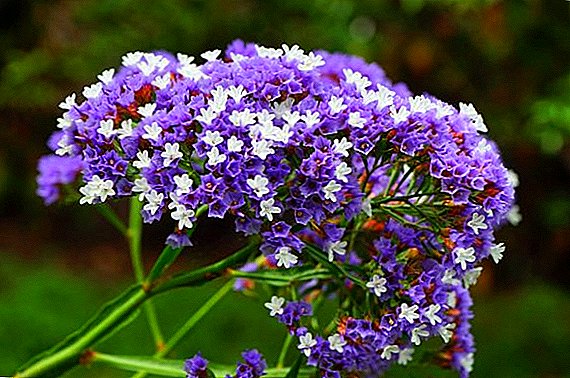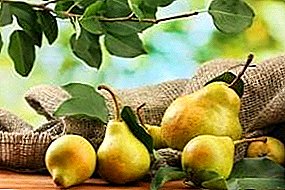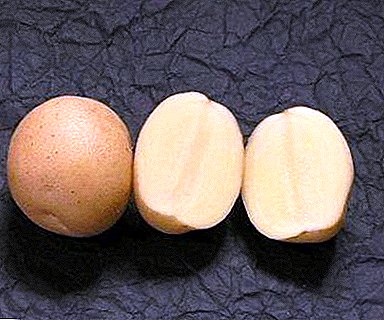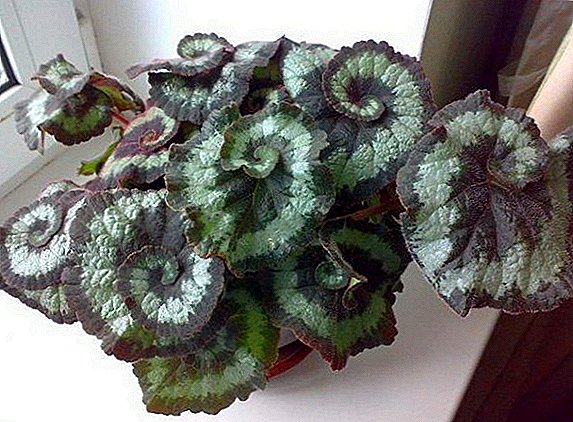
Today, you can buy an orchid even in supermarkets, but often new owners regret to see how a flower fades and dies at home. But in the wild, it can grow in deserts, swamps and even under water.
A healthy orchid is pleasing to the eye with dense, bright green leaves and delicate petals. Leaf fall is completely normal for phalaenopsis, for example, it is one of the flowering phases. However, in other cases, wilting and loss of turgor may indicate serious problems.
The article says what to do if the flower wilted and why it could happen. You can also watch a useful video on this topic.
What does a limp flower look like?
Sometimes the plant takes on a yellow, brown tint, its leaves begin to frown, and the buds fall off.. In some cases, these symptoms may show sticky discharge. Leaves become corrugated, flowers - small and rare. In advanced cases - on the leaves, you can see tears, specks and spots.
Important: If you do not establish the cause of the trouble and do not save the orchid, it can die.
Why is this happening?
Withering fragile flower can begin for several reasons.:
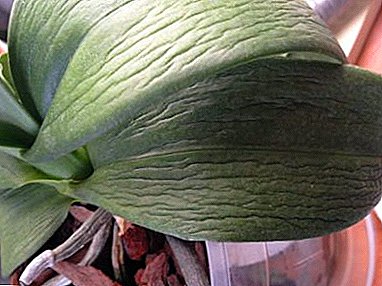 The first thing that comes to our mind when we see a withering orchid is that it needs more water. However, this is not always the case. If only lower leaves wither in phalaenopsis, this means that by giving all the nutrients to the upper “brethren” it will soon dry out. This is a healthy, normal process that does not require intervention.
The first thing that comes to our mind when we see a withering orchid is that it needs more water. However, this is not always the case. If only lower leaves wither in phalaenopsis, this means that by giving all the nutrients to the upper “brethren” it will soon dry out. This is a healthy, normal process that does not require intervention.- Too close the pot, where the root system of the orchid is too clamped.
- If the irrigation regime has been broken and the orchid has long been “thirsty” by the direct rays of the sun. Dry air, a room where heating works and there is no humidifier does not help the orchid to bloom.
- Root decay. Orchids from a supermarket, packed in polyethylene and planted in cramped pots without openings, are plentiful, but there is no place to evaporate excessive moisture.
- Excessive fertilizer. The roots of the plant get a kind of "burn".
- Pests: aphid, scythe, spider mite and others.
- Ethylene gas from heaters that use propane or kerosene for fuel can poison orchid buds! Paint fumes and tobacco smoke also do not contribute to a healthy atmosphere.
How to determine a more accurate cause?
If only the lower leaves dry, there is no cause for concern. They should be removed after complete drying. The following problems occur with improper care:
- Both lower and upper leaves dry - The usual mode of watering was broken. If an orchid “lives” in excessively dry air, its leaves do not sprinkle with water and do not rub with a sponge, it “wears off” to evenly absorb water. The root system dries out and the plant does not get the substances needed for growth and water.
- Leaves do not absorb water, but at the same time sluggish, like a rag. In this case, the problem is also in the roots, but in this case they have rotted due to excessively abundant watering.
Having learned the source of the problems of this kind, it is easy to “revive” the orchid, but with diseases it is a little different:
- The plant receives the necessary amount of water and light, but has withered leaves, and the petals turn brown. It is necessary to establish how and in what quantities fertilizers were introduced into the soil. If the fertilizer is not washed out with water, salt accumulation and root burn can destroy such a delicate flower.
- Leaves have dark bumps, become sticky, overgrown with “cobwebs” and holes are formed on them, as if someone burned a cigarette in them? There is the work of small pests.
How to save the plant?
So, first the general rules:
 Transfer. An orchid purchased from a store in cellophane and a small pot should be freed from them and carefully transplanted into a larger pot with openings at the bottom, without damaging the roots. Moss, placed in a pot with orchid, will help her to liven up. You can not repot the plant during flowering!
Transfer. An orchid purchased from a store in cellophane and a small pot should be freed from them and carefully transplanted into a larger pot with openings at the bottom, without damaging the roots. Moss, placed in a pot with orchid, will help her to liven up. You can not repot the plant during flowering!- Watering mode. Watering an orchid needs cool water every four days. Then the plant should be watered once a week, but the initial stage of recovery should be done more often. To avoid rotting of the roots, you need to make sure that there are holes at the bottom of the pot through which excess water flows. The leaves should be wiped with a damp cloth or sponge, sprayed with a spray bottle.
What if the buds are affected?
Correct the temperature regime. A pot with an orchid is better to move to a place where too much sunlight does not fall. The ideal daytime temperature is 20 ° C. At night, orchids should be cool, otherwise the buds wither.
We recommend to watch the video about the reasons for the drying of orchid buds:
How to help if the leaves dry and turn yellow?
- Shop orchid start fertilizing only 6 months after the purchase. It is better to underfeed than overfeed. A plant that has been burned with nitrogen should stop fertilizing.
- Cutting the roots. When transplanting, it is necessary to remove non-functioning, dry or, on the contrary, rotted, moist roots. With this procedure, you must be especially careful and careful.
If the orchid is “sick” with viral ailments, it will have to be thrown away.. In other cases it will help:
- Remove damaged areas with a sterile knife.
- Treatment with copper sulfate, charcoal or fungicidal preparations. "Antidote" is selected in accordance with the "diagnosis."
We recommend to watch the video about the causes of drying and yellowing of orchid leaves:
Prevention
So, prevention includes:
 Providing enough light for the orchid. In the summer, the pot should be no more than 10-15 cm from the window, with direct sunlight should be avoided. The flower receives solar energy from above, and not from the sides.
Providing enough light for the orchid. In the summer, the pot should be no more than 10-15 cm from the window, with direct sunlight should be avoided. The flower receives solar energy from above, and not from the sides.- Regular, uniform watering. Not too much, not too little.
- Optimum temperature. Reduced temperature, coupled with high humidity provokes the appearance of rot!
- Pure water. This may be rainwater, distilled water, or water infused on egg shells.
Conclusion
People like to admire the flowers, because they remind of nature's bounty, spring, femininity and sensuality. By caring for your home garden correctly, you can admire delicate orchids all your life!


 The first thing that comes to our mind when we see a withering orchid is that it needs more water. However, this is not always the case. If only lower leaves wither in phalaenopsis, this means that by giving all the nutrients to the upper “brethren” it will soon dry out. This is a healthy, normal process that does not require intervention.
The first thing that comes to our mind when we see a withering orchid is that it needs more water. However, this is not always the case. If only lower leaves wither in phalaenopsis, this means that by giving all the nutrients to the upper “brethren” it will soon dry out. This is a healthy, normal process that does not require intervention. Transfer. An orchid purchased from a store in cellophane and a small pot should be freed from them and carefully transplanted into a larger pot with openings at the bottom, without damaging the roots. Moss, placed in a pot with orchid, will help her to liven up. You can not repot the plant during flowering!
Transfer. An orchid purchased from a store in cellophane and a small pot should be freed from them and carefully transplanted into a larger pot with openings at the bottom, without damaging the roots. Moss, placed in a pot with orchid, will help her to liven up. You can not repot the plant during flowering! Providing enough light for the orchid. In the summer, the pot should be no more than 10-15 cm from the window, with direct sunlight should be avoided. The flower receives solar energy from above, and not from the sides.
Providing enough light for the orchid. In the summer, the pot should be no more than 10-15 cm from the window, with direct sunlight should be avoided. The flower receives solar energy from above, and not from the sides.

